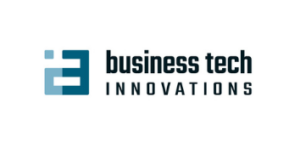
The crossroads of business and technology has evolved in 2024, driven by advancements in artificial intelligence, data processing, connectivity, and automation. With each leap forward, businesses and industries adapt to new tools, paradigms, and opportunities, all while addressing challenges like cybersecurity, regulatory compliance, and environmental impact.
As we inch closer to 2025, these are the key technology trends expected to reshape our world, offering new efficiencies, improving resilience, and unlocking unprecedented possibilities.
1. Hyperautomation: The Drive for End-to-End Automation
Hyperautomation goes beyond individual task automation to orchestrate complex, end-to-end workflows, aiming to automate as much as possible across various systems. By combining artificial intelligence (AI), machine learning (ML), robotic process automation (RPA), and other tools, hyperautomation optimizes operations, reduces human error, and drives efficiency. This trend is significant in sectors where manual processing is cumbersome and error-prone, like finance, healthcare, and manufacturing.
For instance, financial institutions use hyperautomation to streamline compliance processes, automatically analyzing documents, extracting relevant information, and ensuring regulatory requirements are met without human oversight. Similarly, manufacturing companies leverage hyperautomation to monitor quality, assess supply chains, and optimize resources in real time.
2. AI-Augmented Development: Revolutionizing the Software Development Process
As the demands for software and applications continue to grow, AI-augmented development tools empower developers by automating repetitive coding tasks, providing predictive insights, and even generating code based on natural language prompts. These AI tools reduce development times and minimize errors, making software development accessible to a broader range of professionals.
For example, some platforms now allow developers to outline functionality in plain English, with the system translating it into code, reducing the need for deep technical expertise. This trend supports the broader movement toward democratizing technology, enabling non-developers to contribute to app creation, a practice known as “citizen development.”
3. Digital Immunity: A New Paradigm for Cybersecurity
The concept of digital immunity focuses on integrating security at every stage of application and infrastructure development, creating a “self-healing” system that can detect, mitigate, and recover from cyber threats automatically. This approach prioritizes resilience and proactive defense, aiming to reduce vulnerabilities before they can be exploited.
For example, in a digitally immune system, each layer of a company’s infrastructure—whether a web application or a data storage system—has built-in security protocols that automatically adapt to potential threats. This approach reduces the risk of downtime and data breaches, making organizations better prepared for the increasing sophistication of cyberattacks.
4. AI Trust, Risk, and Security Management (AI TRiSM): Ensuring Responsible AI Use
As AI systems become more embedded in decision-making, organizations must manage the associated risks to ensure trustworthiness, compliance, and ethical integrity. AI TRiSM (Trust, Risk, and Security Management) refers to frameworks and tools that help maintain transparency in AI, from decision-making processes to data handling practices.
This trend involves the establishment of AI governance policies and audits, such as regular checks to verify that AI algorithms are not biased or discriminatory. Healthcare, finance, and legal sectors, in particular, benefit from AI TRiSM, as it aligns AI use with regulatory standards and fosters public trust.
5. Industry Cloud Platforms: Sector-Specific Cloud Solutions
Industry cloud platforms provide tailored solutions for different sectors, combining specific capabilities with a flexible cloud infrastructure. Unlike traditional cloud offerings, which are often generalized, industry cloud platforms focus on sector-specific needs, allowing for better alignment with regulatory requirements, faster deployment of specialized applications, and easier customization.
For instance, healthcare cloud platforms integrate compliance features that address patient privacy laws, while manufacturing clouds may focus on real-time data analytics for supply chain management. This trend allows industries to embrace digital transformation without reinventing the wheel each time.
6. Platform Engineering: Enhancing Developer Experience
Platform engineering aims to simplify the software development lifecycle by centralizing tools, workflows, and best practices into a single, cohesive environment. By creating standardized “platforms” for development teams, organizations can reduce operational complexity, enhance developer productivity, and accelerate product releases.
A platform engineering team might, for example, set up standardized environments where developers can access commonly used tools, code libraries, and databases with minimal configuration. This structured approach improves consistency and efficiency, especially in larger organizations with complex systems and cross-functional teams.
7. Quantum Computing Expansion: Pushing Boundaries in Processing Power
Quantum computing promises to revolutionize fields such as cryptography, logistics, and materials science by tackling calculations that would take traditional computers years, or even centuries, to process. As more organizations explore quantum computing research, this technology is gradually inching closer to real-world applications.
Though still in its nascent stages, quantum computing has shown promise in areas like drug discovery, where complex molecular interactions can be modeled faster than traditional computing allows. While widespread adoption may be a few years away, early experiments demonstrate the technology’s potential to transform problem-solving capabilities across industries.
8. Enhanced Connectivity with 5G and Beyond: Enabling New Applications
The rollout of 5G networks provides faster data transmission speeds, low latency, and improved connectivity. These advancements will support applications in autonomous vehicles, smart cities, and the Internet of Things (IoT), where real-time data exchange is critical.
With 5G, sensors and devices in smart cities can communicate instantly, allowing for real-time traffic monitoring, automated energy management, and improved public safety. Autonomous vehicles, too, stand to benefit, as low-latency connectivity enables seamless communication between cars and infrastructure, enhancing safety and efficiency.
9. Composable Applications: Modular Software for Agility
Composable applications are designed with modular components, allowing organizations to customize and reconfigure their software based on specific needs. This trend emphasizes flexibility, enabling companies to respond to market changes more dynamically and roll out new functionalities without requiring a complete rebuild.
In practice, a composable application in retail could allow a business to switch out payment systems or customer relationship management modules quickly if a better option becomes available. This approach reduces dependence on single, monolithic software solutions, empowering companies to adapt more readily to change.
10. Sustainable Tech Practices: Prioritizing the Environment
With climate change and resource scarcity becoming more pressing concerns, technology firms are increasingly focusing on sustainable practices. From energy-efficient data centers to eco-friendly packaging, the trend towards sustainable tech helps reduce the environmental impact of technology infrastructure.
A key area of sustainable tech is green data centers, which use energy-efficient designs and renewable energy sources to minimize their carbon footprint. Additionally, technology companies are investing in supply chain transparency to ensure responsible sourcing of raw materials, while AI is being applied to optimize logistics and reduce energy consumption across industries.
These technologies represent more than just innovative tools—they are reshaping how we work, live, and solve complex problems. As businesses and individuals embrace these trends, the goal remains to create a resilient, efficient, and sustainable future. From AI and automation to enhanced connectivity and sustainable practices, these advancements mark the next chapter in the digital transformation journey, promising a world that is not only more connected but also more adaptive to the challenges ahead.




